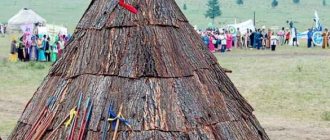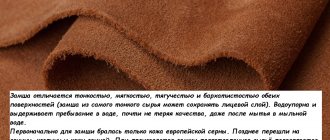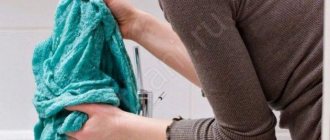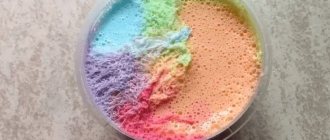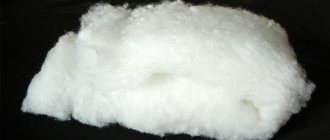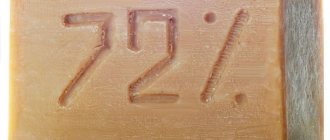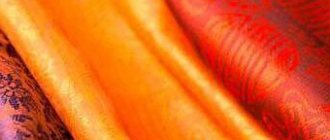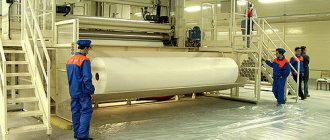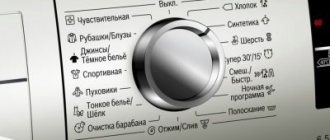The choice of fabrics in the textile world is so wide that it is easy to get confused in the names and properties. Natural, artificial, synthetic. The Internet is full of their descriptions.
Fabrics made from artificial fibers are especially popular. For example, viscose.
When fabrics are not labeled as “natural,” consumers may be prejudiced against them, viewing them as synthetic. Viscose is one of the most misunderstood fibers, man-made or natural. This is not a natural fiber at all. It also has nothing to do with synthetics. Although, sometimes viscose is called natural synthetics.
Particular attention is paid to the use of chemicals in the production of viscose. Today, companies producing viscose and other man-made materials are striving to achieve cleaner production, with processes that do not impact the environment. With various unique characteristics, viscose is an ideal fiber that can be used in a variety of applications. Thanks to this versatility, viscose materials are used in the fashion industry, in medicine, and in everyday life.
Before understanding in detail the topic: “Viscose - what kind of fabric?”, Let’s give a description of viscose fiber.
Viscose fiber is a man-made fiber created by processing cellulose.
What is viscose fabric made from? To create viscose, turn it into threads, and then from these threads to produce a fabric that can withstand regular wear and washing, it is necessary to resort to technological processes that use treatment with chemicals (caustic soda, NH3, acetone and H 2 SO 4). The output is fabric made from natural raw materials, created using chemicals.
Since the initial product is cellulose, a natural substance, this fiber is more stable than synthetics (for example, polyester). Increasingly, lyocell technology is used for the production of viscose, with the solvent N-methylmorpholine N-oxide. This is a more environmentally friendly method as it produces little waste.
When and how did viscose fiber appear?
The first attempts by English scientists to learn how to create artificial fibers similar to natural silk can be dated back to the 17th-18th centuries. This process was long and not always successful. English chemists were truly lucky at the end of the 19th century when they managed to improve the process of making fiber from recycled wood pulp and obtain a new fabric.
They came up with a name for it - viscose (viscosus in Latin means sticky, viscous). Apparently, because the raw material for its production was a viscous thick mass obtained from processed wood. The manufacturing technology has been patented. And it is still used in almost the same form today. Since 1892, first England and then other countries began producing viscose.
Production
The production of the canvas is preceded by a series of chemical processes to break down wood cellulose. The technology of modern viscose production is based on initial developments with significant modernization.
The process is divided into basic stages:
- Crushing wood material into small chips and boiling them in an alkaline solution to obtain a raw material base, which is a gray cellulose mass.
- Bleaching and pressing.
- Creation of threads by pressing the mass through the tiny holes of a spinneret into a container of acid.
- Processing and finishing of fibers.
- Drying.
How is viscose thread produced and what is it made from?
The raw material for the production of viscose is a substance that is found in large quantities in wood. This is cellulose - a natural material. Under the influence of chemicals, natural raw materials are transformed first into fiber, then into threads and fabric.
Main technological processes:
- Wood raw materials are cleaned, crushed into small chips, boiled at high temperature in an alkali solution and excess water is removed.
- The resulting base mass is passed through special holes in the plate, and they fall into a container with acid. The process produces cellulose fibers that are spun into short and long strands.
- Then they are dried, bleached, and pressed.
- They are sent to weaving factories where viscose threads are created and dyed.
Depending on the method of processing raw materials in industry, several different types of viscose fibers are obtained, which differ in appearance from each other. In terms of properties, they are largely the same.
- Textile - from them the thinnest threads are obtained, from which textiles are made.
- Staple - wool is spun from short strands of the same length, warm clothes are sewn, carpets are woven, and fur is obtained.
- Technical - used for the production of durable and dense cord materials.
- Untreated viscose fiber is made into felted products.
Structure and properties
Viscose fiber is a structural modification of cellulose. The properties of viscose fibers depend on the structure of the outer shell, which determines the increased strength of the fibers.
Viscose fibers are perfectly dyed, have excellent hygienic qualities, are highly durable, are quite cheap, and combine well with artificial fibers in the fabric.
Scope of application of viscose
Let's consider the areas of application of viscose. Viscose is a natural and artificial fabric, which makes it widely used in the creation of fabrics for clothing, home textiles, curtains, bed and underwear, as fillers for blankets, and for technical products.
Viscose is added to natural fabrics to obtain additional properties. Elastane is often used to improve performance. Cellophane, which is a viscose film, is used as packaging.
Is viscose a natural fabric or not?
To answer this question, you need to remember the classification of textile raw materials - any types of fibers (natural and chemical) that are suitable for processing.
Natural ones are animal wool, silkworm threads, raw materials of plant origin (linen, cotton).
Chemical – what is obtained as a result of processing various types of raw materials with chemicals. In turn, they are divided into synthetic fibers obtained from various organic substances (for example, polyester from polyester fibers), and artificial fibers, which are obtained by processing natural raw materials (rubber, casein fibers from milk, viscose from cellulose).
Based on this, viscose is an artificial fiber obtained from natural raw materials - wood cellulose. From this point of view, the fabric can be considered natural. But at the same time, special chemical solutions are used in production, that is, it is obtained artificially. Therefore, viscose is sometimes called natural synthetics.
The difference between viscose and cotton and synthetics
Some believe that viscose is a synthetic fiber, others attribute it to cotton. None of the statements are true.
Artificial raw materials, like viscose, are produced by processing natural wood material. This natural cellulose is a natural fiber, but the threads themselves for future fabrics are obtained artificially.
Whereas natural materials are made from fibers that are already available; during the work of silkworm caterpillars, the growth of cotton, or flax and animal wool.
Synthetics are a product created by man using developed technologies. In short, threads are produced by synthetic processing of petroleum products.
The difference between the three types of fabrics lies in the raw materials and processing methods.
Composition and types of viscose fabrics
The general name “viscose” refers to several types of fabrics with different characteristics. Their physical and mechanical properties depend not only on processing methods and the method of fiber formation, but also on the composition of the raw materials used in production.
Natural 100% viscose resembles silk in appearance - translucent, soft, shiny. Its properties vary depending on the raw materials used:
- Modal is a fabric made from 100% cellulose obtained from high-quality wood without the use of any harmful impurities or chlorine. Due to the special weave of the fibers, the material has many of the qualities of cotton. Clothes and bedding are made from it.
- Siblon is a textile fabric that is very popular among consumers. Durable, does not wrinkle, does not shrink when washed, and is relatively cheap. The raw material used in its production is coniferous wood.
- Bamboo - this raw material produces a fiber that is as similar in properties as natural cotton.
- Tencel (lyocell) - the raw material is eucalyptus fibers processed into cellulose. The fabric is distinguished by antiseptic properties, special strength, and hypoallergenic. It breathes well, does not wrinkle, is soft and silky. It is mainly used to make bedding and clothing.
- Acetate is produced from cellulose waste. It looks like silk. But due to the fact that the fabric is not hygroscopic, fragile in structure, and does not allow air to pass through, it is used mainly as a lining material.
- Cupra is a decorative silky fabric with good thermoregulation and breathability. Difficult to produce: it is obtained from cellulose treated with copper sulfate and ammonia. Evening dresses are made from it. Clothes made from this fiber are difficult to care for.
- Staple – made from short fibers. Due to this, the fabric is almost not deformed, its structure is elastic. Classic staple (or mixed) is most often made from cotton and viscose in equal proportions. This fabric makes excellent summer dresses, sundresses, children's clothing, and men's shirts. The disadvantages are that the material wrinkles and shrinks.
- Viscose silk is an artificial analogue of natural fabric, obtained from viscose fiber. Externally, the fabric is similar to satin, chiffon, crepe. Sometimes elastane is added to the composition. Inexpensive and fashionable clothes are made from it. The material is quite dense, light, beautiful, flowing. Items made from it are easy to care for.
Artificial, synthetic, and natural fibers added to viscose fabric in most cases improve its properties. When combined with cotton, it becomes more durable and strong. When adding elastane, it becomes elastic.
Types of mixed fabrics:
Viscose with cotton - the union of these two fibers, without compromising the hygienic properties of natural fabric, increases its strength and improves its appearance. But material with added cotton may shrink when washed.
Viscose with polyester (polyviscose) - this soft dress fabric, plastic, durable, form-fitting, is obtained by combining artificial viscose and synthetic polyester. A small percentage of elastane can be added to the blended fabric. Dresses, outerwear, decorative textiles with beautiful draperies, and suits are made from it.
Viscose with elastane - this additive makes non-plastic viscose fabric elastic and increases its stretchability. This fabric is used to make sportswear and women's clothing.
Viscose knitwear is a fabric that is pleasant to the body, light, soft, elastic, drapes beautifully, has moderate stretch, but does not stretch, and almost does not wrinkle. It is used for sewing sweaters, children's clothing, T-shirts, both monofilament and as part of other fabrics.
Viscose lining is made entirely from viscose fabric or with the addition of cotton and polyester. Smooth, durable fabric that does not deform when worn, absorbs moisture well, glides, and serves as an ideal lining material for sewing hats and outerwear.
Quilted viscose is a two-layer fabric from which light blankets, home textiles, quilted jackets, and dresses are sewn.
Crepe viscose is a cotton-like fabric that is pleasant to wear and drapes well. All types of this fabric are slightly rough to the touch due to a special technology for twisting the threads in the fabric.
Description
What kind of fabric is viscose? The classic version is soft to the touch, thin, silky, shiny material. However, what the fabric ultimately looks like is determined, again, by the production technology - it can be similar to wool, silk, or linen. This is why the use of viscose is so widespread.
Probably, a simple description of viscose fabric was not enough for you, let's look at a photo of the material itself and products made from it.
The price depends on the composition of the canvas. Pure viscose, without the addition of synthetics, costs from 500 rubles per linear meter.
Advantages and disadvantages
There are many varieties of viscose fabric. And its characteristics are, first of all, determined by its composition. If we focus on the fact that it is 100% viscose, obtained entirely from wood cellulose without the addition of other natural or synthetic additives, its main properties are as follows:
- Softness and pleasant tactile sensations when in contact with the skin.
- The ability to drape beautifully.
- Regulates heat exchange: it’s comfortable in hot weather, and you won’t freeze in cold weather.
- Not electrified.
- Viscose fabric is lightweight - it weighs half as much as cotton.
- Absorbs moisture well.
- Durable.
- Does not fade and colors well.
- Does not irritate the skin.
- Easily decomposes after use - no conditions are required for its disposal.
There are also disadvantages:
- Consumers are often interested in whether this material wrinkles or not. Yes, viscose wrinkles a lot. And this is one of the disadvantages of 100% viscose fabric. But at the same time it is easy to iron.
- Requires special care. If washed incorrectly, clothing made from it can become deformed: shrink or stretch - fabric when wet can change its properties if it is not handled properly.
- Burns out in the sun. When ultraviolet radiation hits fabric, it destroys its structure, causing clothes to wear out faster.
Many of these disadvantages can be eliminated if other fibers are added to the fabric during the manufacturing process.
Story
Viscose fiber is artificially derived from natural cellulose. Translated from Latin, viscosus means sticky. The first process for producing viscose fibers was described by J. Mercer in the 40s of the 19th century. The beginning of the application of production technology in industry belongs to E. Schweitzer and dates back to 1857. In 1892, the Englishmen Beadle, Cross and Bevin were able to obtain viscose fiber industrially. In France, at the beginning of the 20th century, J. Brandenberger patented the production of cellophane. In 1902, the process for producing viscose (artificial silk) was patented.
In the Soviet Union, the production of viscose began in the late 20s of the twentieth century.
Comparison of artificial viscose with other fabrics
Which is better, cotton or viscose? In both cases, it is a light, “breathable” material that is pleasant to the touch and absorbs moisture well. But cotton fabric is more durable. And both in dry and wet conditions. While the structure of wet viscose is subject to faster destruction, deformation and wear.
If you compare viscose with wool, things made from natural animal raw materials are warmer.
Polyester and viscose are often compared. But these are completely two different types of fibers. Viscose, obtained from natural raw materials, can be equated in properties to natural hygroscopic and breathable fabrics. The same cannot be said about polyester. It does not “breathe”; it is uncomfortable in both summer and winter.
But synthetic fabric is easier to care for. It is more durable and not afraid of moisture. This property is important to consider, for example, when choosing a carpet. Viscose carpet, which does not tolerate moisture, should not be placed in rooms with high humidity.
Reviews
Previously, I didn’t know whether viscose was a synthetic or a natural fabric, but a friend who works as a salesperson in Auchan told me what it is. I bought a jacket made from this material, and I can’t say that I’m delighted. After washing, pills appeared on the jacket, but the original color was preserved, which is not bad. But it seems to me that it is better to buy things not from pure viscose, but combined with some other fiber.
Milena
My wife bought me a viscose T-shirt, but in the heat it’s hard to wear, you start to sweat. I don’t know how to feel about this, it seems that it is made of artificial fabric.
Alexander
I love handicrafts, I bought viscose material, I want to sew myself a dress. According to the description I found on the Internet, the fabric does not wrinkle, consists of natural fiber and does not lose its appearance after washing. I think this is good.
Svetlana
Originally posted 2017-12-21 07:30:00.
What is sewn from viscose
Products made from viscose occupy a significant part of our wardrobe. It could be:
- Home textiles.
- Different types of clothing for women and children: dressy, casual, home.
- Bed sheets.
- Underwear.
Viscose with the addition of polyester is used as lining material. Unprocessed viscose fiber is used to make toys. Viscose threads are used by embroiderers. The material is used for sewing shoes. Carpets are woven from viscose yarn and sweaters, hats, and scarves are knitted.
You can sew romantic, beautiful things from light, airy, perfectly draping viscose. Seamstresses love working with this material. Although cutting and sewing will require certain skill and experience: the material is mobile, easily moves when cutting, and the sections fall off. When sewing yourself, you need to process the cuts with an overlocker and make wider allowances.
Advantages and disadvantages
The characteristics of viscose consist of positive and negative aspects.
Positive traits:
- Comfortable and pleasant to wear.
- Paints well and retains color brightness for a long time.
- Permeates air and absorbs moisture.
- Has the property of thermoregulation.
- Does not cause allergies, skin irritations and does not accumulate static electricity.
- Drapes beautifully and is easy to sew.
- Eco-friendly, harmless to nature when disposed of.
Negative properties:
- Greater susceptibility to creasing during use.
- The fabric is not durable, it soon wears out and loses its original appearance under the influence of high temperatures and ultraviolet radiation.
- Difficulties in caring for viscose products due to deformation and shrinkage during washing.
How to care for viscose
You need to wash, dry, and iron viscose clothes carefully and gently. And she will serve her term without losing her appearance.
Wash
It is better to do this manually or in a washing machine using the “gentle wash” mode. Water temperature – no more than 30 degrees. It is advisable to use mild detergents for delicate fabrics.
Spin
When washing by hand, the product should not be twisted, rubbed, or squeezed hard. When washing in a machine, you need to use a spin cycle at low speeds or exclude this process from washing altogether.
It is recommended to dry items in a dryer, spread out, away from heating appliances and away from direct sunlight.
Ironing
Iron on the minimum setting or setting the “silk” setting. Do not spray with water or steam using the steam function of the iron. But you can treat clothes with a steam generator by hanging them on hangers.
Recommendations for care
When washing things made of viscose, you must follow the recommendations, since the material is difficult to care for, like all things made from natural fabrics. All washing, drying and ironing operations must be carried out with care.
- Hand washing is preferable for viscose. Machine wash only on delicate cycle and preferably in a laundry bag. Spin needs to be turned off. Detergents should be soft and it is better to use liquid ones.
- Wrinkling or rubbing the fabric is not recommended. Replace wringing by gently squeezing out excess water and then letting it drain naturally.
- Drying flat on a towel or dryer will help prevent deformation and stretching.
- It is recommended to iron with a low-heat iron in the “silk” position and without steaming. Iron items should be slightly damp or through a damp iron. Spraying water and steam causes stains on fabric.
When caring, you should take into account the composition and manufacturer's recommendations on the product label.
What else are consumers interested in?
- Does viscose stretch or not?
100% viscose has very little stretch. The elasticity of matter is 2-3%. To increase this parameter, elastane is added to the fiber. However, if viscose clothes are dried vertically, they may stretch.
- Do pellets form on the surface of the material?
With proper care, even after numerous washes, the fabric does not pill.
- What composition does viscose shrink with?
100% viscose fabric does not shrink or stretch when washed if things are handled with care when wet. But viscose with additives can behave differently.
For example, if the fabric contains threads of cotton or wool, the material, taking into account their natural properties, may shrink when washed. In addition to shrinkage, cotton makes the fabric wrinkle. Polyester causes pilling to appear on clothes.
To avoid these troubles, you need to familiarize yourself with the designations on the clothing label and the composition of the fabric.
- How to determine whether there are viscose fibers in the fabric?
The easiest way is to pull a thread from the fabric and set it on fire. Viscose thread flares up with a strong and bright flame and burns quickly. In this case, a characteristic smell of burnt wood or paper appears. Synthetic fabric takes a long time to melt.
- What to do if your favorite dress becomes two sizes smaller after washing?
Pro tip: if a viscose item shrinks, you need to wash it again on a delicate cycle in the machine or by hand.
Mixed species
To reduce the impact of negative properties on the performance characteristics of the material, manufacturers introduce other fibers into the composition.
For example, polyester or nylon threads are added to viscose in different percentages. This provides greater strength, better wear resistance and less creasing of products. Such fabrics are called polyviscose.
Viscose fibers are also mixed with natural threads such as cotton, silk and wool. In some cases to reduce cost, in others to add softness and distinctive properties.
Material cost
You can buy viscose at any fabric store or order it online. The price range is wide, for every budget. A meter of 100% viscose costs 500–900 rubles. Fabric with various additives costs from 300 to 1000 rubles per meter.
When choosing viscose items, you need to pay attention to what type of fabric they are made from. Despite the fact that viscose is not very expensive, it is counterfeited. It's easy to check for a fake. When ignited, viscose thread flares up and burns quickly, while synthetic thread takes a long time to melt.
Use together
If these two fabrics are so similar, maybe there is no point in comparing them, trying to find a winner and a loser? Perhaps they could enrich each other with their valuable properties if they were combined? Then the winners will be, first of all, the buyers of such materials. Indeed, quite often, when different fibers are mixed, the fabric acquires the best qualities of one, while retaining all the positive qualities of the second. This is the meaning of the invention of mixed materials. Textile manufacturers thought about this a long time ago and began to produce mixed fabrics, which contain two related fibers.
Such fabrics are stronger than viscose, but more flexible than cotton, which is important for sewing elegant clothes; easy to care for, are not afraid of getting wet, and at the same time keep the color after many washes. In addition, they remain the same hypoallergenic, hygroscopic and breathable. In addition, using viscose of different thicknesses, you can make fabrics that are warm enough for the autumn-winter season. This is also how viscose-cotton yarn appeared for knitting warm and soft children's clothing.
To sum it up, buying cotton and rayon blend products can be a great compromise when searching for the truth - which one is better on its own. After all, individually, each is only slightly superior to the other in some ways, and only slightly inferior in others.
History and production process
In 1664, British physicist Robert Hooke worked on obtaining natural fabric from wood raw materials. There was a lack of technical capabilities to implement this process. Therefore, the idea had to be abandoned.
Material range
In 1855, George Oudemars developed a technology for making viscose by hand. He dipped a thin needle into a sticky mixture of rubber, crushed wood, alcohol and ether. In this way the threads must be formed and mined. It was a long and labor-intensive process that could not be continued. The material was easily flammable, so it was again unviable. Only 30 years later, the French chemist Count Guiller de Chardonnay managed to develop a new technology for the production of viscose material.
Viscose material
He patented his invention and founded a company to produce it. The material shone and was fragile, easily flammable. The scientist continued to improve the fabric production technology. In 1889, new types of threads were introduced. In 1892, British chemists Charles Frederick Cross, Edward John Beaven and Clayton Beadle developed a technology for the production of viscose.
Loom
Viscose manufacturing technology:
- Grind the cellulose and boil it in a container with calcium hydrosulfite salt.
- Remove water. Leave the humidity at 6-8%.
- Remove impurities by heating a sodium hydroxide-lye solution. As a result, alkali cellulose is formed.
- Keep the raw materials until ripe. There will be a decrease in the molecular weight of the original cellulose wood.
- Treat raw materials with carbon disulfide. Add alkali solution and mix. The result is a viscose solution containing 85% water.
- Leave the solution for several days to mature and obtain viscosity.
Traditional material production
- To produce the material, use the wet method. The solution is passed through dies. It is sent to precipitation tanks filled with acid.
- The resulting raw materials are used to produce long threads that are wound onto bobbins.
After the threads are formed, they are wound onto bobbins.
This is a traditional production method. But today more modern technological processes already exist. However, many manufacturers have not yet perfected their production.
Modern production
Fabric products
Clothing is made from synthetic knitwear, mainly for women, which is worn in the warm season or in a heated place. Things made from cold weather are not worn in layers, nor are they worn with tights or an additional blouse - this increases the electrification, the knitwear crumples and creeps unsightly up to the waist.
Product options:
- dresses, tunics, sundresses, blouses;
- Men's shirts;
- underwear;
- evening, cocktail dresses;
- stage and dance costumes.
Synthetic knits and especially chills are very popular in the Middle East, where the climate is hot and women traditionally wear covered clothing. This type of fabric allows them to completely cover their head and body while still feeling comfortable.
